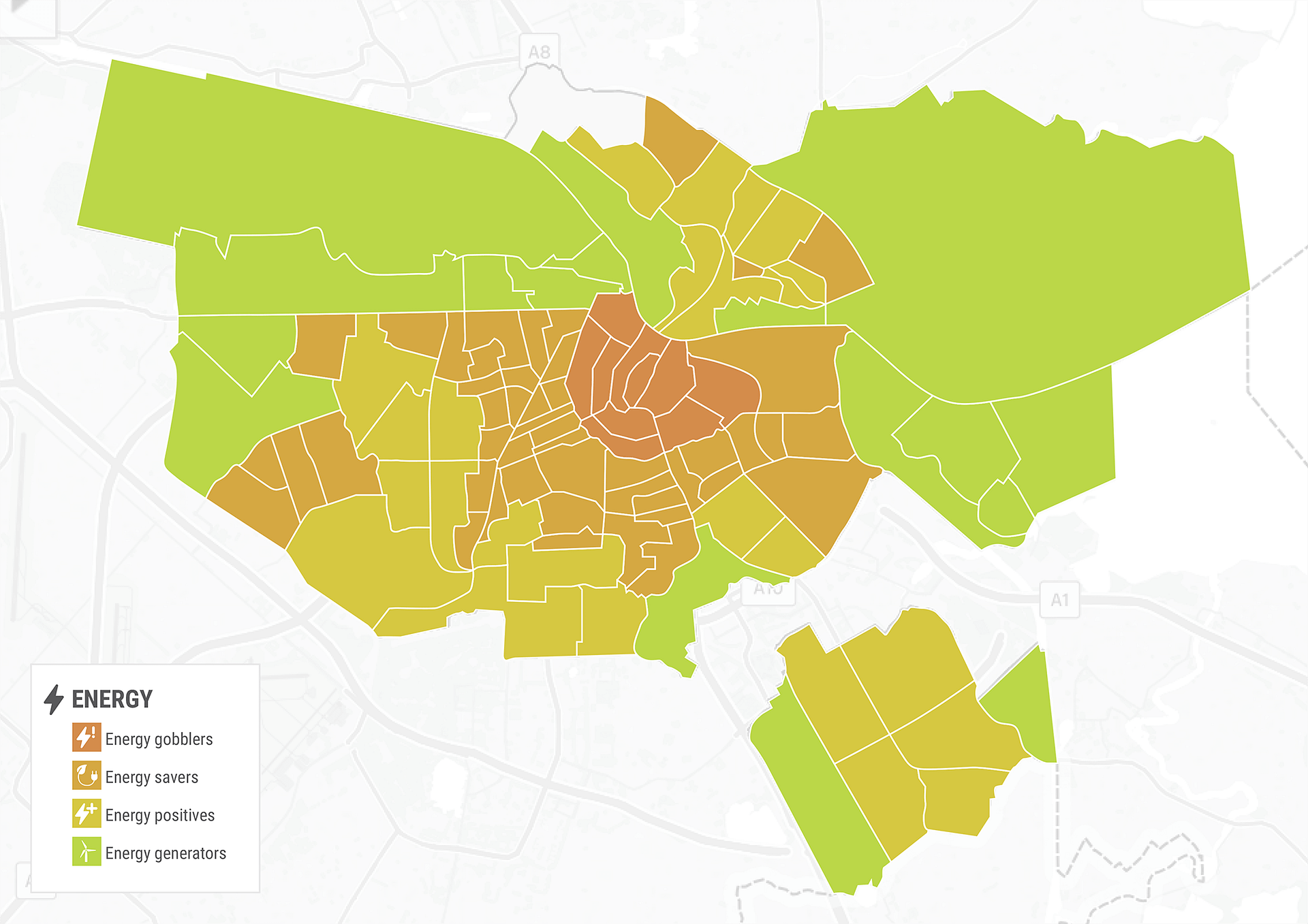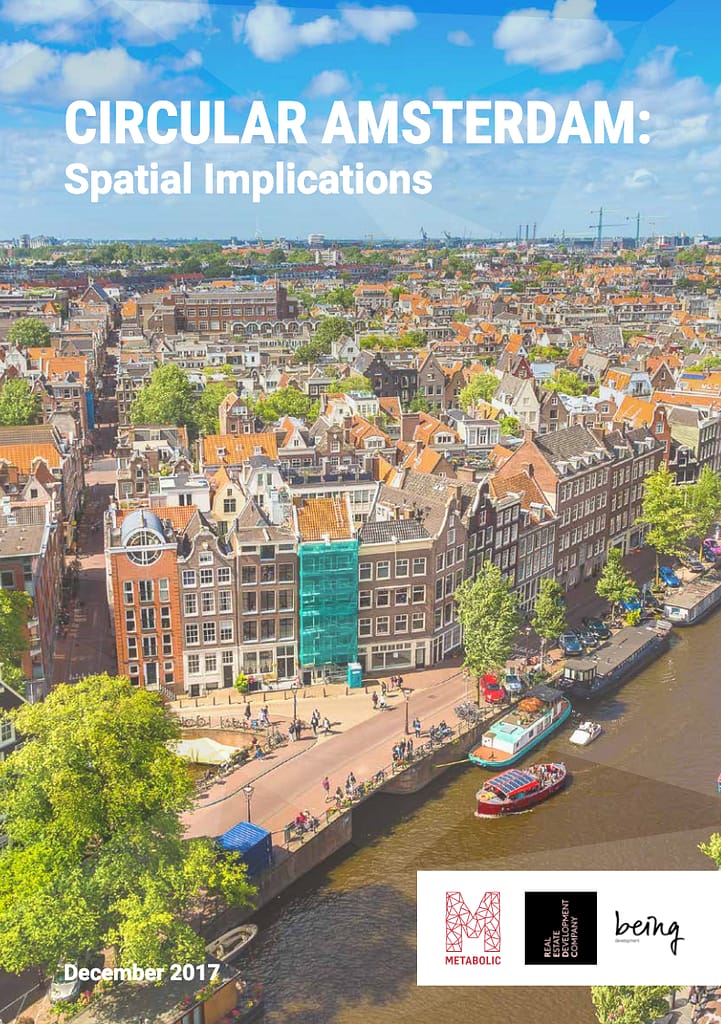Circular Amsterdam: Spatial analysis for effective city planning
Spatial analysis of Amsterdam as a circular metabolism
Metabolic was asked to gather Amsterdam’s goals for circular economy and use spatial analysis to examine how these goals could be achieved by taking the different characteristics of the city neighborhoods into consideration.
- Client: Being Development and RED Company
- Date: October 2017
To lay the groundwork for moving towards circularity, Amsterdam has completed studies, developed tools, and defined goals. However, an important missing piece in the pathway forward is to understand how these circularity goals relate to the distinct characteristics of the city’s diverse neighborhoods. Some have high levels of social cohesion, others do not; some have old monumental buildings, others are post-industrial brownfields destined for complete reconstruction.
Metabolic categorized neighborhoods in Amsterdam based on materials, energy, ecosystems, and quality of life. Through these scorecards, we worked out there were four types of neighborhood and proposed circularity strategies for each: the concrete jungle, the green neighborhood, the outback neighborhood, and the green oasis.
By analyzing which role specific neighborhoods could best play in the urban metabolism of Amsterdam given their respective characteristics, Metabolic showed how spatially sensitive analysis of social and physical factors is essential for effective city planning towards circularity. Additionally, we delivered an in-depth analysis of one specific neighborhood with special relevance for the client. The findings of this project went on to inspire Metabolic’s Cities Programme to help urban areas make the circular transition all over the world.














“All buildings are connected to a larger network of structures and services, including transport services, sanitation systems, electricity networks, waste processing systems and public spaces. In order to become completely circular, the design of buildings must run parallel to the broader urban system or the region in which it is embedded.”
Merlijn Blok, Metabolic Sustainability Consultant
Director of Sustainable Cities & Regions
ANY QUESTIONS?
For more information about this project, please get in touch.






